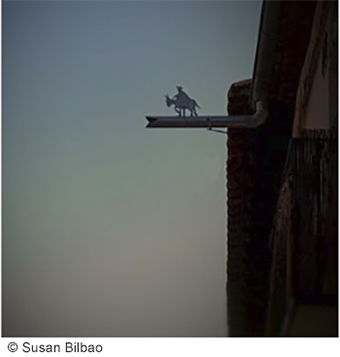Deus-Ex-Machina: about uncertainty
ἀπὸ μηχανῆς θεóς “God through the machine”
© Emilio García Dominguez
It is called "Deus Ex Machina" any plot that is resolved through an element, character or external force that has not been mentioned previously and has nothing to do with the characters or the internal logic of the story.
Thus, in photography, always, between the subject and the artificer - the author- mediates a contraption, an apparatus, an optical device: the camera. A machine.
The machine makes the photo: no matter how planned, measured and considered the shot may be; even with all our experience, ability, intuition ... in that tiny fraction of a second that separates the act of pressing from the visible final result, in that slight instant ... a miracle, a disaster, a variation, an unforeseen may happen... a ' something 'in short, sometimes practically imperceptible, that actually grants the final authorship to a machine.
Just as the "Heisenberg uncertainty principle" concludes that observation modifies or alters what is observed (something that in an artistic context can be considered a value, the manifestation of personality and 'style'), we must add that in the case of photography there is another alteration: the one produced by the mechanism through which we look, observe, feel and think and where, finally, 'the photo is made'. Even today it is difficult for many people to consider Photography pure ‘art’; such reluctance is due to the presence of the machine. The explicit hand of the author in the processes of development, image treatment, photocompositions, etc. can't get around that uncomfortable dependency on the machine. This supposed loss of human quality, this deficit of artistic purity, could have to do with the famous “disturbing valley” postulated in 1970 by the Japanese robotics expert Masahiro Mori. Here, the fact that a machine so faithfully transfers our way of seeing and that through it we can even transmit feelings, generates an almost unconscious distrust, and sometimes fear.
Today we have such an endless amount of images within our reach that it seems they were made by themselves, and we tend to forget that they are there because someone, a human being, has made them. This magazine, 1:1, helps us to remember that behind each image there are people, and in this issue we will learn a little about the work of four of them who risk the uncertainty of whether what will 'come out' after him ' click 'the photographic camera will correspond with what he observed through the viewfinder and with what he visualized in his mind during that incalculable time in which both the creator and the motive were mutually exposed. Being able to take such a risk could, perhaps, be the true “art of photography”.
1.- The uncanny valley is a hypothesis in the field of robotics and 3D computer animation that states that when anthropomorphic replicas get too close to the appearance and behavior of a real human being, cause a rejection response among human observers. The "valley" in question is a slope in a proposed graph, which measures the positivity of people's reaction based on the robot's human resemblance


